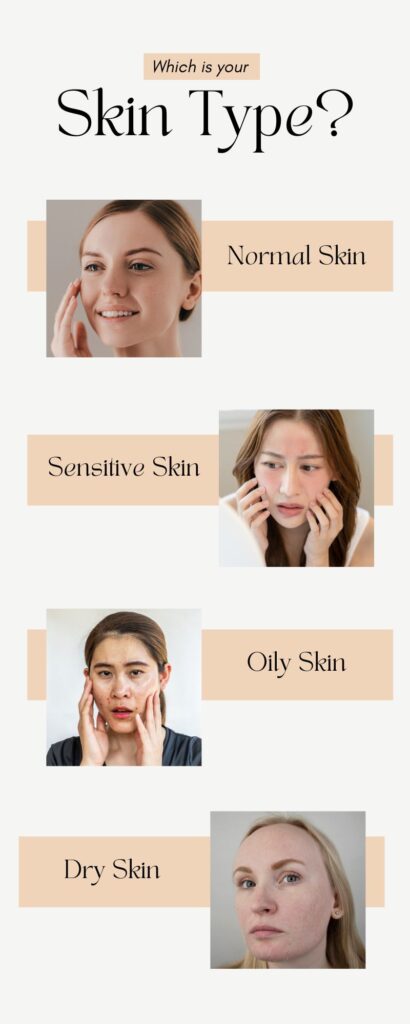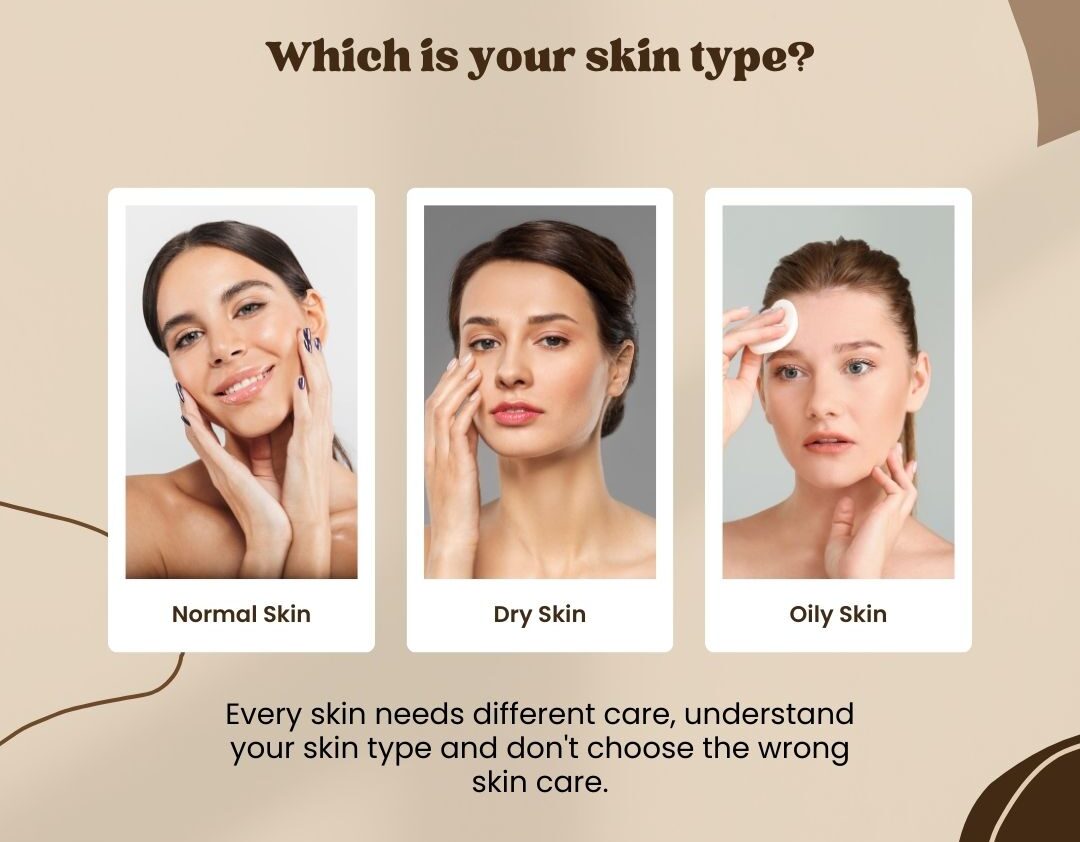Understanding your skin type is essential for creating a personalized skincare routine that works for you.
Have you ever looked at someone’s skin and wondered why it looks so different from yours? You are not alone. Five basic skin types are determined by genetics, environmental factors, and lifestyle choices. Our skin is a complex organ that comes in a variety of shapes, sizes, and textures. Each skin type requires different care and attention to maintain its health and radiance.
In this article, we will explore the characteristics of each skin type and provide tips on how to care for them. By the end, you will have a better understanding of your skin and how to keep it looking its best. Get ready to reveal your skin’s true beauty!
Table of Contents
5 Different Skin Types

When it comes to our skin, there’s no one-size-fits-all approach. Five distinct skin types require different care and attention. Understanding your skin type is crucial for achieving a glowing complexion and maintaining overall skin health. So, Here are 5 Basic Skin types with tips on how to take care of them.
1. Normal Skin
This is the lucky skin type that most people strive for. It is well-balanced, meaning it is neither too oily nor too dry. Normal skin has small pores, a smooth texture, and an even complexion. While people with normal skin may not have to worry too much about specific skin issues, it’s still important to maintain a good skincare routine to keep this balance.
How to Take Care?
- Limit Hot Water Exposure
- Stay Hydrated
2. Dry Skin
Dry skin can be a frustrating problem, but with the right tips and techniques, you can achieve ultimate hydration.
This skin type lacks moisture and often feels tight and uncomfortable. Dry skin can be caused by genetics, environmental factors, or using harsh skincare products.
Those with dry skin may experience flakiness, dullness, and a higher risk of premature wrinkles. To combat dryness, it’s important to use gentle, hydrating products and avoid harsh ingredients.
Uncover the secrets to nourishing and moisturizing your dry skin for a radiant and healthy complexion.
How to Take Care?
- Moisturize Regularly
- Stay Hydrated
- Exfoliate Gently
- Use Warm, Not Hot Water
- Avoid Harsh Ingredients
- Use Oil-Based Products
- Use Overnight Masks
3. Oily Skin
This skin type produces excess sebum, leading to a shiny, greasy appearance. People with oily skin are more prone to acne and enlarged pores. However, oily skin also has its benefits, as it tends to age slower than other skin types. The key to managing oily skin is to use products that control oil production without stripping the skin.
Say goodbye to oily skin woes with these effective solutions. Learn how to control excess oil production, minimize shine, and keep your skin looking fresh and matte throughout the day.
How to Take Care?
- Choose Oil-Free Moisturizers
- Apply a lightweight, oil-free sunscreen
- Oil-Absorbing Products
- Hydrate with Water-Based Products
- Clay Masks
- Avoid Touching Your Face
4. Combination Skin
Are you struggling with combination skin? Discover the secrets to achieving a harmonious balance between oily and dry areas. Learn how to tailor your skincare routine to address the specific needs of combination skin.
It is a mix of both dry and oily skin. This type often has an oily T-zone (forehead, nose, and chin) and dryness on the cheeks. Combination skin can be tricky to care for since you’ll need to address both oily and dry areas. A balanced skincare routine with targeted products is key for keeping combination skin healthy and balanced.
Combination skin requires a skincare routine that addresses both oily and dry areas.
How to Take Care?
- Avoid Harsh Products
- Use a mild, pH-balanced cleanser
- Apply a gentle, alcohol-free toner to balance the skin’s pH.
- Use a lightweight, oil-free moisturizer on the oily areas of your face
- Exfoliate 1-2 times a week to remove dead skin cells
- Use a mild, pH-balanced cleanser
5. Sensitive Skin
This skin type is easily irritated, and reaction-prone to certain ingredients and environmental factors. Sensitive skin can also be a result of underlying skin conditions, such as eczema or rosacea. People with sensitive skin need to be extra cautious with the products they use and opt for gentle, fragrance-free options.
How to Take Care?
- Look for products that contain gentle and nourishing ingredients like aloe vera, chamomile, and oat extract
- Fragrance-free products
- Free from harsh chemicals
- Avoid using exfoliating products that contain abrasive particles or strong acids
- Protect your sensitive skin from the sun’s harmful rays. Always Use Sunscreen.
Conclusion
Knowing your skin type is the first step in creating an effective skincare routine. Keep in mind that our skin can change over time due to various factors, so it’s important to regularly reassess your skin and adjust your routine accordingly. By taking care of our skin according to its specific needs, we can achieve a healthy, radiant complexion.
Discover the truth about your skin type and why it may not be what you think. Learn how to properly identify your skin type and find the best skincare routine for your unique needs.
Also Read:
What is the Best Skin Care Routine for Oily Skin?
